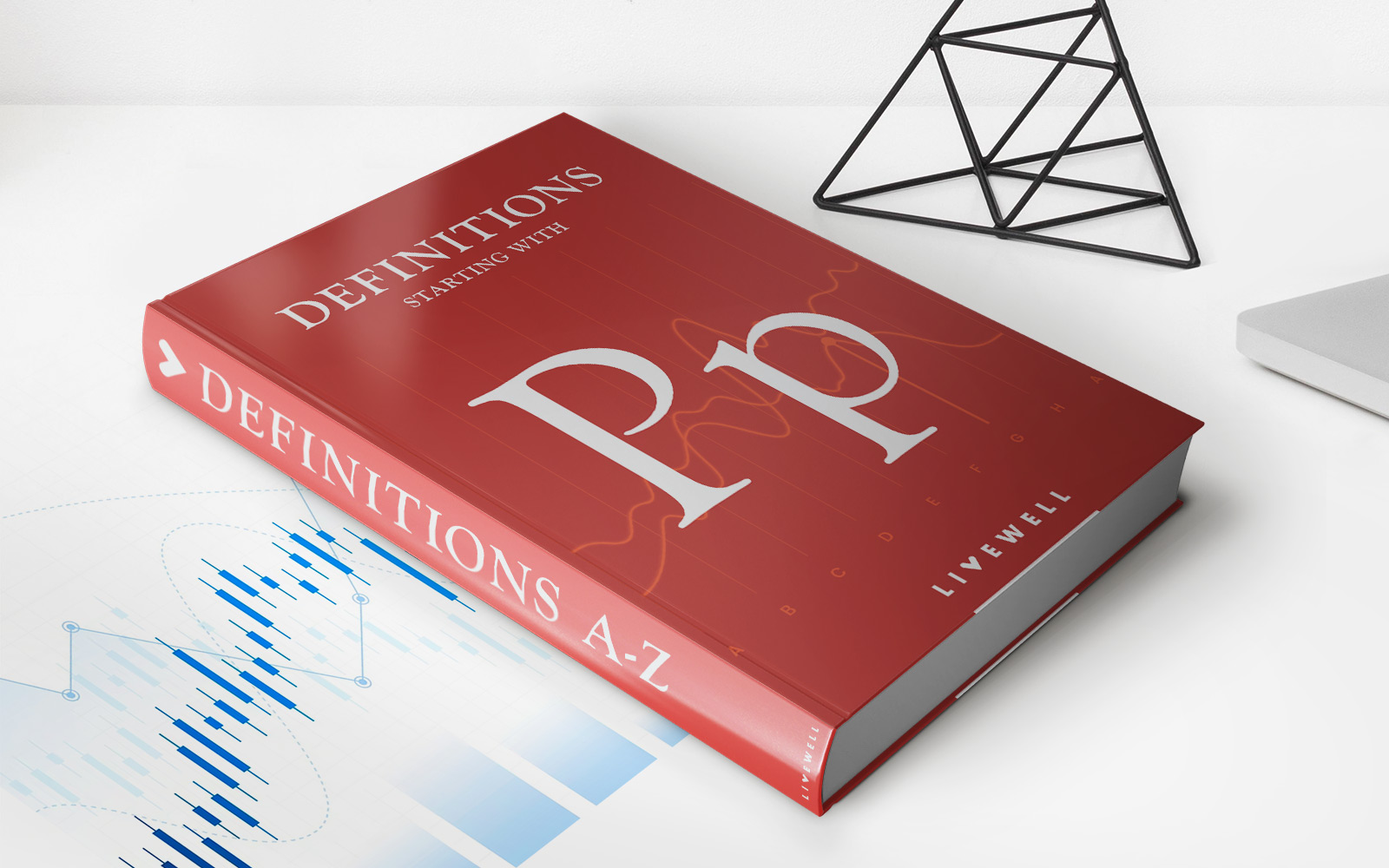Home>Finance>What Is The Term For A Person Who Receives Financial Protection From A Life Insurance Plan?


Finance
What Is The Term For A Person Who Receives Financial Protection From A Life Insurance Plan?
Modified: December 30, 2023
Discover the term for a person who receives financial protection from a life insurance plan in the field of finance.
(Many of the links in this article redirect to a specific reviewed product. Your purchase of these products through affiliate links helps to generate commission for LiveWell, at no extra cost. Learn more)
Table of Contents
Introduction
When it comes to securing our financial well-being, there are various strategies and products available to provide us with the necessary protection. One such product is a life insurance plan, which offers financial security to individuals and their loved ones in the event of their passing. Life insurance is a crucial component of a comprehensive financial plan, offering peace of mind and ensuring that our loved ones are taken care of in our absence.
In this article, we will delve into the concept of financial protection and explore the intricacies of life insurance plans. Specifically, we will focus on the term used to describe a person who receives financial protection from a life insurance plan. Understanding this term is paramount in comprehending the role and significance of beneficiaries in the context of life insurance.
We will unravel the complexities surrounding life insurance and shed light on the importance of having the right coverage in place. Whether you are considering obtaining life insurance or simply seeking to expand your knowledge in the realm of personal finance, this article aims to provide you with valuable insights and a deeper understanding of the topic.
So, let’s begin our journey into the world of financial protection and explore the term for a person who receives such protection through a life insurance plan.
The Concept of Financial Protection
Financial protection is a fundamental aspect of ensuring the stability and well-being of individuals and their families. It encompasses strategies and mechanisms that mitigate financial risks and provide a safety net in times of uncertainty. The goal of financial protection is to shield individuals and their loved ones from the potentially devastating effects of unexpected events, such as disability, illness, accidents, or death.
Achieving financial protection requires a comprehensive approach that includes various elements such as saving for emergencies, creating a budget, investing wisely, and obtaining insurance coverage. Insurance plays a crucial role in this framework by transferring the financial risk associated with certain events to an insurance provider in exchange for regular premium payments.
Life insurance, in particular, is designed to provide financial security to the policyholder’s beneficiaries in the event of their death. It serves as a financial safety net that ensures the continued financial stability of dependents, such as spouses, children, or other designated individuals named as beneficiaries in the policy. By providing a lump sum payment, known as the death benefit, life insurance can help cover funeral expenses, outstanding debts, ongoing living expenses, education costs, and more.
Moreover, life insurance also acts as a form of income replacement, allowing survivors to maintain their standard of living and meet their financial obligations. It serves as a critical tool for individuals who have dependents or financial commitments and wish to protect their loved ones from the financial consequences of their untimely death. Life insurance can offer immense peace of mind, knowing that one’s family will be taken care of and provided for even when they are no longer around.
Understanding the concept of financial protection is essential as it enables individuals to make informed decisions about their financial security and choose the appropriate insurance products that align with their needs and goals. By recognizing the value of safeguarding against potential risks, individuals can proactively ensure the financial well-being of their loved ones and create a legacy of financial stability for future generations.
Understanding Life Insurance Plans
Life insurance plans come in different types and offer varying levels of coverage and benefits. It’s important to understand the key components and features of a life insurance plan to select the one that best suits your needs.
1. Policyholder: The policyholder is the individual who purchases the life insurance policy and pays the premiums to the insurance company.
2. Premiums: Premiums are the periodic payments made by the policyholder to maintain the life insurance policy. The amount of the premiums is determined by various factors, such as the age, health, gender, and lifestyle habits of the insured.
3. Death Benefit: The death benefit is the amount of money paid out to the beneficiaries upon the death of the insured. It is crucial to determine the appropriate amount of coverage to ensure that your loved ones are adequately protected financially.
4. Term Life Insurance: This type of life insurance provides coverage for a specified period, usually ranging from 10 to 30 years. If the policyholder passes away during the term, the death benefit is paid out to the beneficiaries. Term life insurance is usually more affordable compared to permanent life insurance.
5. Permanent Life Insurance: Permanent life insurance offers coverage for the entire lifetime of the policyholder, as long as the premiums are paid. It can be further categorized into whole life insurance and universal life insurance. Permanent life insurance policies also have a cash value component, which accumulates over time and can be accessed by the policyholder.
6. Riders: Riders are additional provisions that can be added to a life insurance policy to enhance coverage or provide additional benefits. Common riders include accidental death benefit riders, critical illness riders, and waiver of premium riders.
Understanding the various types of life insurance plans and their components is crucial in making an informed decision. It’s essential to assess your financial goals, budget, and the needs of your beneficiaries to choose the most suitable life insurance plan for your specific circumstances. Consulting with a licensed insurance agent can provide valuable guidance and help you navigate the complexities of life insurance.
The Beneficiary of a Life Insurance Plan
In a life insurance plan, the beneficiary is the individual or entity designated to receive the death benefit upon the policyholder’s passing. The beneficiary plays a vital role in the overall framework of the life insurance policy, as they are the intended recipient of the financial protection it provides.
1. Choosing a Beneficiary: When purchasing a life insurance policy, the policyholder has the discretion to choose one or multiple beneficiaries. Typically, individuals select their spouse or children as primary beneficiaries. However, it’s not limited to immediate family members, and policyholders can name anyone they wish as long as it’s a legal entity or an individual with an insurable interest.
2. Contingent Beneficiaries: In addition to primary beneficiaries, policyholders can also choose contingent or secondary beneficiaries. Contingent beneficiaries receive the death benefit only if the primary beneficiaries are deceased or unable to receive the payment. This ensures that there is a backup option in case the primary beneficiaries are no longer alive.
3. Irrevocable vs. Revocable Beneficiaries: It’s essential to understand the difference between irrevocable and revocable beneficiaries. Designating a beneficiary as irrevocable requires their consent to make any changes to the policy. On the other hand, revocable beneficiaries can be changed or updated by the policyholder without the recipient’s consent.
4. Per Stirpes and Per Capita: When multiple beneficiaries are named, it’s important to specify the distribution method. The terms “per stirpes” and “per capita” are commonly used. Per stirpes means that each branch or line of beneficiaries receives an equal share, while per capita means the share is divided equally among all living beneficiaries.
5. Trusts and Entities: Policyholders may choose to designate a trust or an entity as a beneficiary for added flexibility in distributing the death benefit. This option allows for special conditions or instructions to be implemented and provides greater control over how the funds are used.
It is crucial to periodically review and update beneficiaries, especially during significant life events such as marriage, divorce, birth of a child, or the passing of a loved one. This ensures that the life insurance policy aligns with the desired intentions and protects the intended individuals or entities.
Lastly, if the policyholder has not named any beneficiaries or if the designated beneficiaries predecease the policyholder, the death benefit may be paid to the policyholder’s estate. However, this may result in delays and potential legal complications.
Consulting with an experienced estate planning attorney or financial advisor can provide guidance in selecting and updating beneficiaries to ensure that your life insurance policy aligns with your wishes and offers the utmost financial protection to your loved ones.
The Term for a Person Who Receives Financial Protection
The individual who receives financial protection from a life insurance plan is commonly referred to as the beneficiary. The role of the beneficiary is critical in the context of a life insurance policy, as they are the intended recipient of the death benefit provided by the insurance company.
The beneficiary is the person or entity named by the policyholder to receive the financial proceeds upon the insured individual’s death. The death benefit is typically a lump sum payment that is paid out by the insurance company and is intended to provide financial support and security to the beneficiary in the absence of the policyholder.
The term “beneficiary” is a standard industry term used across various types of insurance policies, including life insurance. It signifies the person who benefits from the financial protection offered by the insurance policy. The beneficiary can be an individual, such as a spouse, child, or other family member, or it can be an organization, such as a charity or trust.
It’s important to note that the policyholder has the autonomy to designate one or multiple beneficiaries. For instance, a policyholder may choose to name their spouse as the primary beneficiary and their children as contingent beneficiaries. This ensures that the financial protection is provided to the intended individuals in the event of the policyholder’s passing.
While the term “beneficiary” is widely used, it’s worth mentioning that different terminologies can be used depending on the context and the specific insurance policy. For example, in a retirement account, the term “beneficiary” is used to describe the person who inherits the account upon the account holder’s death.
Understanding the term for a person who receives financial protection, i.e., the beneficiary, is crucial in comprehending the dynamics of a life insurance policy. By recognizing the significance of the beneficiary, policyholders can make informed decisions when selecting and updating their beneficiaries, ensuring that their loved ones are well taken care of financially.
Consulting with an insurance professional or financial advisor can provide valuable guidance on the selection and designation of beneficiaries to ensure that the life insurance policy aligns with your specific goals and offers the utmost financial protection to your loved ones.
Conclusion
Financial protection is a vital aspect of securing our present and future well-being. Life insurance plans offer a crucial form of financial protection by providing a safety net to our loved ones in the event of our passing. Understanding the intricacies of life insurance and the role of beneficiaries is essential in maximizing the benefits of such policies.
In this article, we have explored the concept of financial protection and the role of life insurance plans in providing it. We have learned that financial protection encompasses strategies and mechanisms that shield us from the potentially devastating effects of unexpected events. Life insurance serves as a crucial component by offering financial security to beneficiaries, allowing them to maintain their standard of living and fulfill financial obligations even in the policyholder’s absence.
We have also discussed the various types of life insurance plans, such as term life insurance and permanent life insurance, and the importance of choosing the right coverage to meet our specific needs. Additionally, we have highlighted the significance of selecting and updating beneficiaries, as they play a pivotal role in receiving the financial protection provided by the life insurance policy.
By understanding the term for a person who receives financial protection, i.e., the beneficiary, we can make informed decisions when selecting and updating beneficiaries based on our individual circumstances and goals. Designating the right beneficiaries ensures that the intended individuals or entities receive the financial support they need during challenging times.
It is crucial to review our life insurance policies periodically and make adjustments as our life circumstances change. Life events such as marriage, the birth of a child, or the passing of a loved one may necessitate updates to the beneficiary designation. Consulting with insurance professionals or financial advisors can provide valuable guidance and help ensure that our life insurance plans align with our current needs and goals.
In conclusion, life insurance plans offer a valuable source of financial protection and peace of mind. By understanding the concept of financial protection, the different types of life insurance plans, and the role of beneficiaries, we can make informed decisions to secure the financial well-being of our loved ones. Remember to regularly review and update your beneficiaries to ensure that your life insurance policy provides the intended support and protection for those you care about the most.














